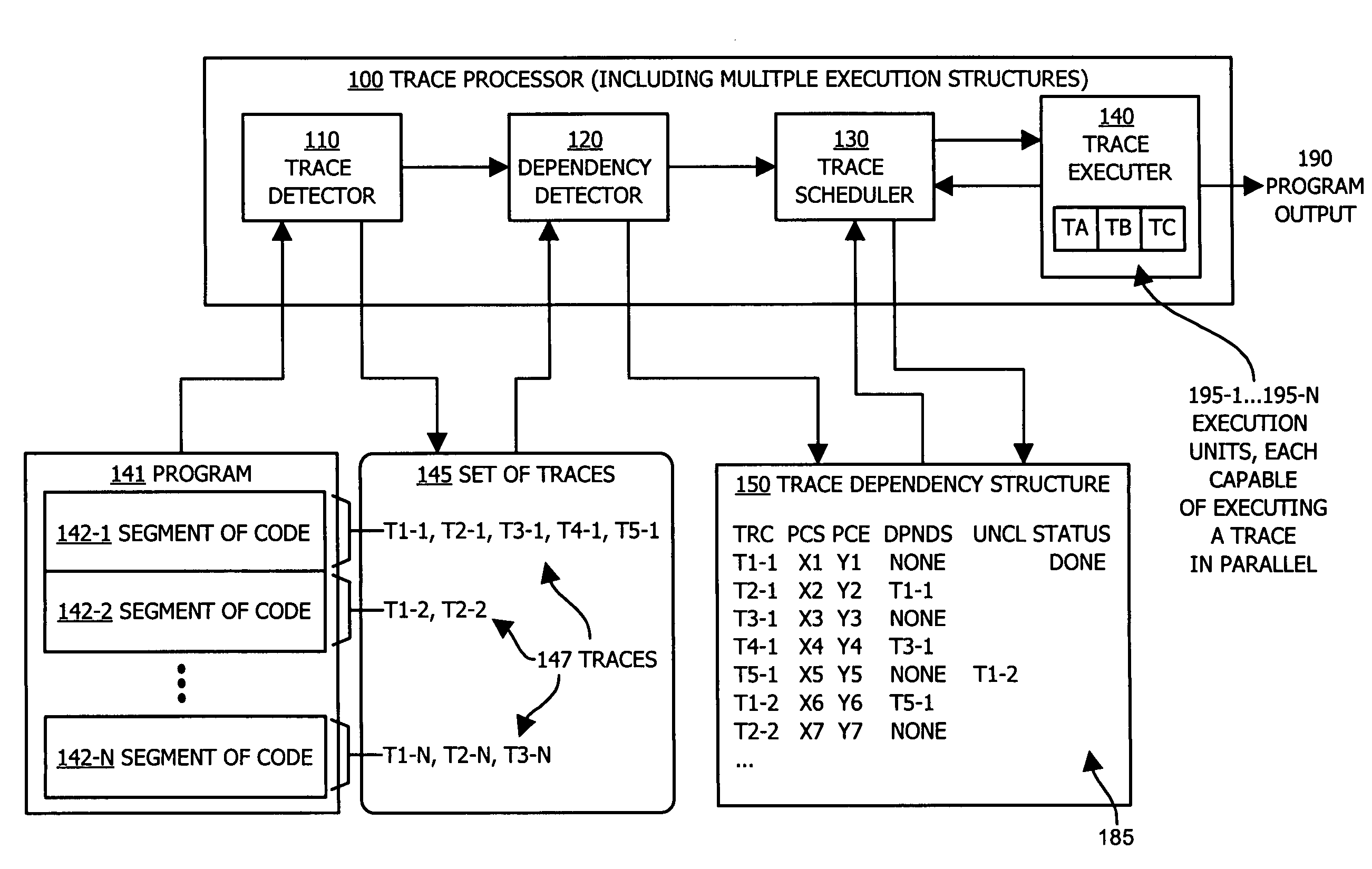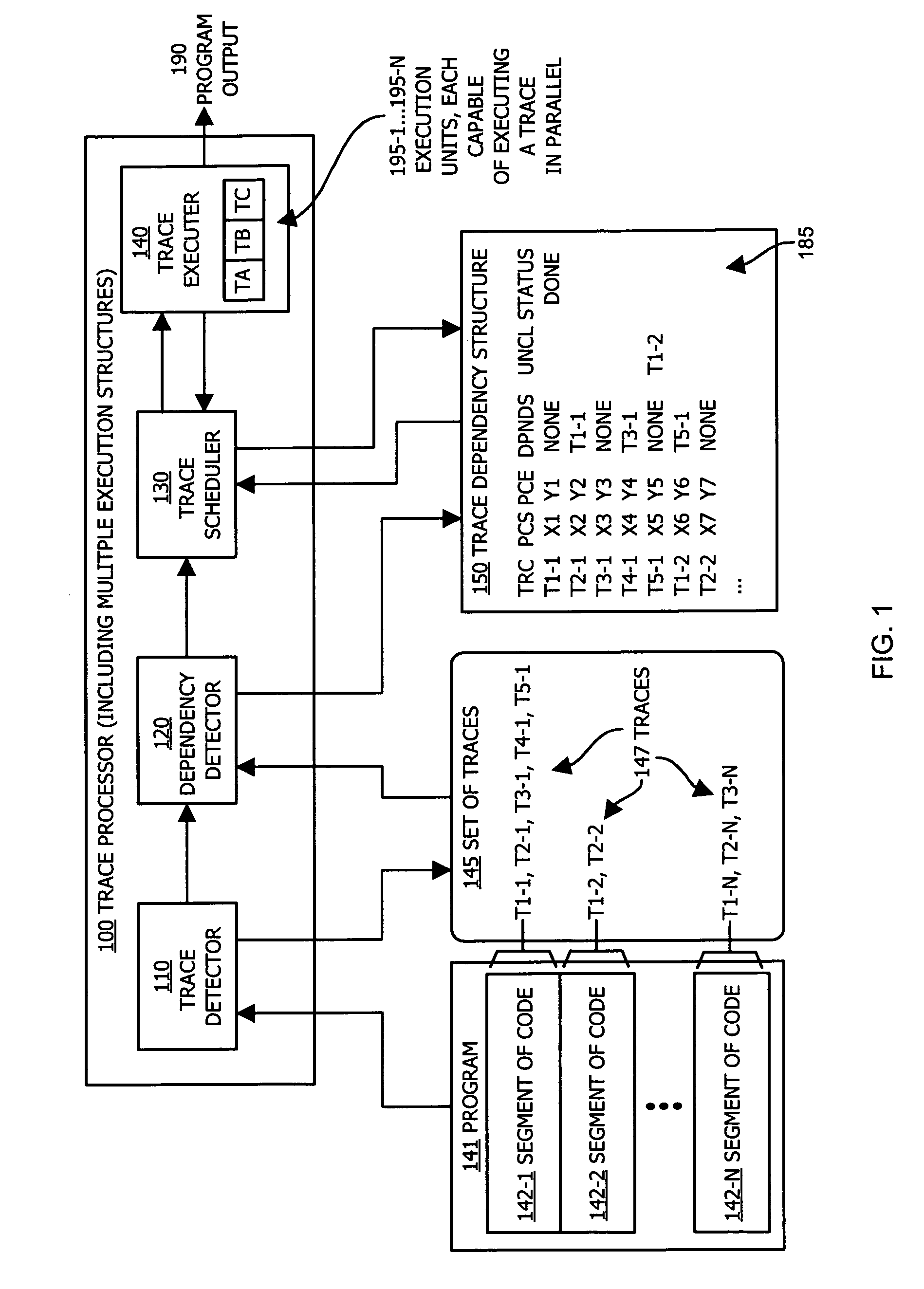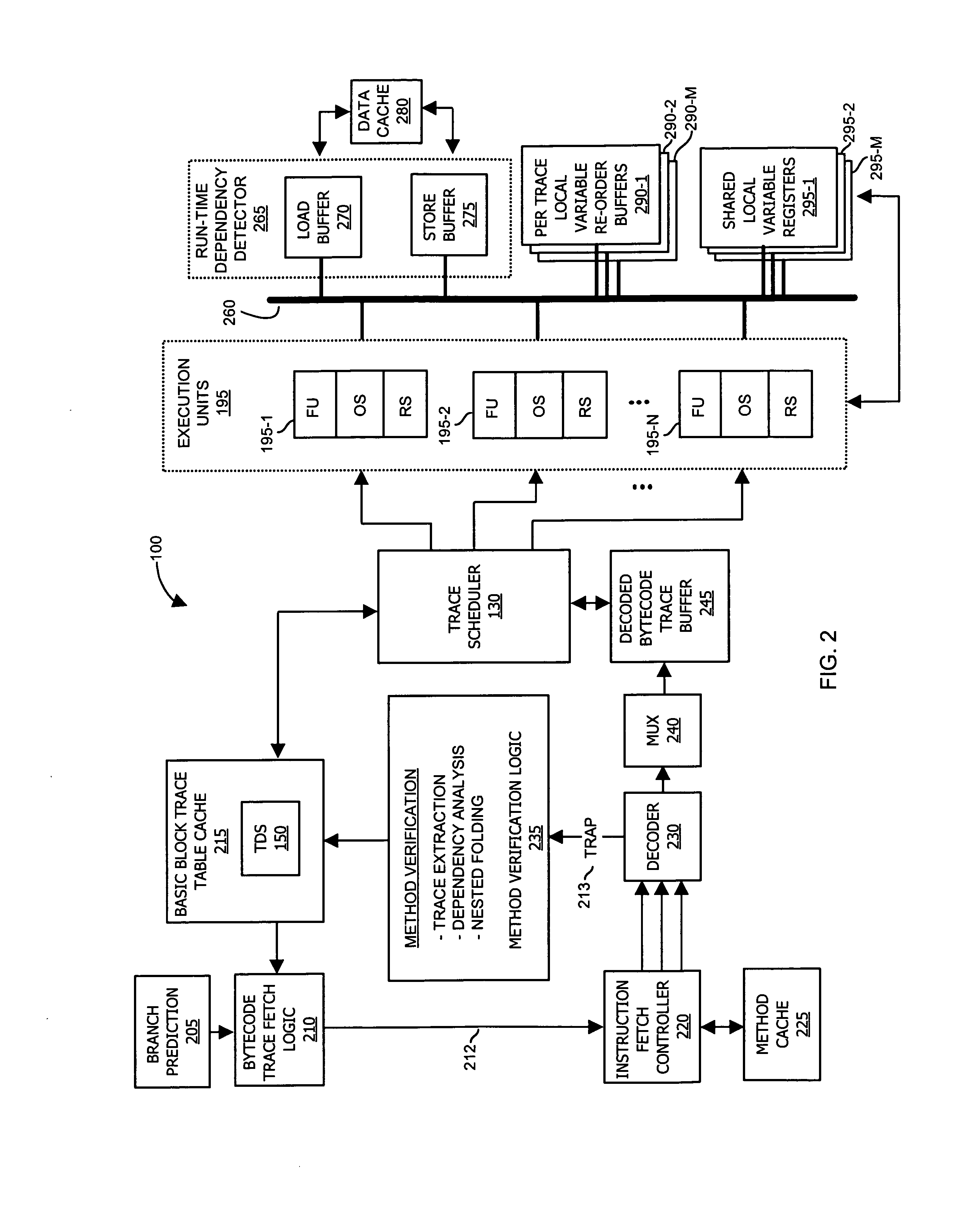Methods and apparatus of an architecture supporting execution of instructions in parallel
a technology of instructions and methods, applied in the field of computer systems, can solve the problems of a variety of performance deficiencies, parallel execution of instructions is significantly limited, and the thread cannot access or alter the java stack of another thread, so as to improve the execution time of programs and increase the execution speed of programs
- Summary
- Abstract
- Description
- Claims
- Application Information
AI Technical Summary
Benefits of technology
Problems solved by technology
Method used
Image
Examples
Embodiment Construction
[0048]Embodiments of the invention provide techniques (e.g., both hardware and software) for executing instructions of a software program in parallel when such instructions are performed using a parallel execution structure-based processing paradigm. In one application, the parallel execution structure is based on a stack-based execution architecture executing Java bytecode instructions. More particularly, embodiments of the invention are based in part on an observation that during execution of instructions within a segment of code, there are instances or points in time at which an execution structure such as a stack begins in a clean state (e.g., an empty operand stack) and returns to the clean state after execution of a series of instructions.
[0049]The series of instructions between two clean states of an execution structure such as a stack is referred to herein as a “trace”. As an example, consider a Java thread of bytecode instructions that utilize a stack during operation withi...
PUM
 Login to View More
Login to View More Abstract
Description
Claims
Application Information
 Login to View More
Login to View More - R&D
- Intellectual Property
- Life Sciences
- Materials
- Tech Scout
- Unparalleled Data Quality
- Higher Quality Content
- 60% Fewer Hallucinations
Browse by: Latest US Patents, China's latest patents, Technical Efficacy Thesaurus, Application Domain, Technology Topic, Popular Technical Reports.
© 2025 PatSnap. All rights reserved.Legal|Privacy policy|Modern Slavery Act Transparency Statement|Sitemap|About US| Contact US: help@patsnap.com



